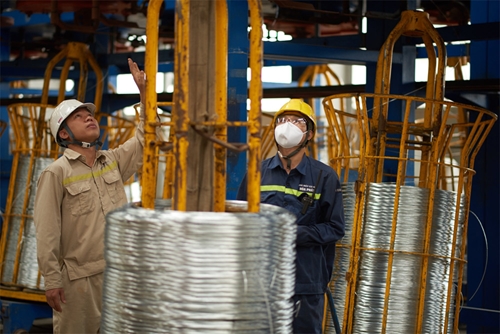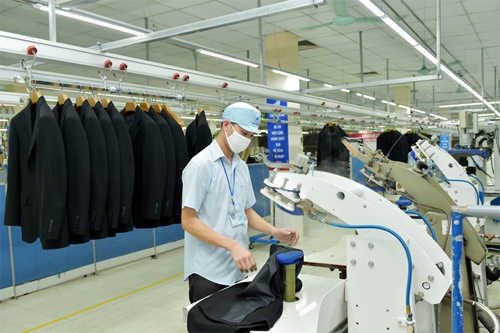    |
 |
|
Production activities at Hoa Phat Group Joint Stock Company |
In 2021, Vietnam’s trade balance fluctuated erratically, even sometimes witnessing large trade deficits. However, it was also the first time the total import-export turnover of the country was above USD 600 billion, with the export value of more than USD 300 billion, showing a significant trade surplus.
At the end of September 2021, the export turnover of the textile and garment industry reached USD 39 billion, an increase of 11.2 percent and 0.3 percent compared to that of 2020 and 2019 respectively. As Vice President and General Secretary of the Vietnam Textile and Apparel Association, Truong Van Cam said, the whole sector did its utmost to achieve the result. The pandemic had a significant impact on businesses until the government approved Resolution No.128/NQ-CP regulating the period of “safe and flexible adaptation and effective control of the pandemic” in the country.
In addition to textiles, numerous main export businesses in different sectors in Vietnam have also overcome obstacles to meet or surpass expectations, adding considerably to the country’s first-ever export turnover exceeding USD 300 billion.
According to the General Statistics Office, the total export and import turnover in 2021 reached USD 668.5 billion, an increase of 22.6% in comparison to the previous year. The value of commodity exports was estimated at USD 336.25 billion, up 19% against 2020. In 2021, there were 35 items earning export turnover of more than USD 1 billion, accounting for 93.8% of the total export turnover (including eight products recording more than USD 10 billion in export each, accounting for 69.7%).
    |
 |
|
Production activities at Garment Corporation 10-JSC, Hanoi |
Furthermore, the country’s exports to major markets, typically ASEAN, the United States, China, and the European Union, all increased significantly compared to the same period in 2020. Surprisingly, Vietnam has returned to a trade surplus after several months of a large trade deficit.
“In order to boost goods export growth in the future, we need to focus on quality rather than quantity,” stated Dr. Le Quoc Phuong, former Deputy Director of the Information Center for Industry and Trade under the Ministry of Industry and Trade. To achieve that goal, it is necessary to strongly develop support industries so as to increase localization rates, boost trade promotion, diversify export markets, take advantage of free trade agreements (FTAs), reform administrative procedures, and improve the business environment to create more favorable conditions for enterprises.
Vietnam is striving hard to integrate into the global economy. Up to now, Vietnam has signed 15 FTAs. Businesses must innovate, change their business thinking in the new context, and accept competition as a fundamental element of the market economy in order to benefit from FTAs.
Translated by Minh Anh